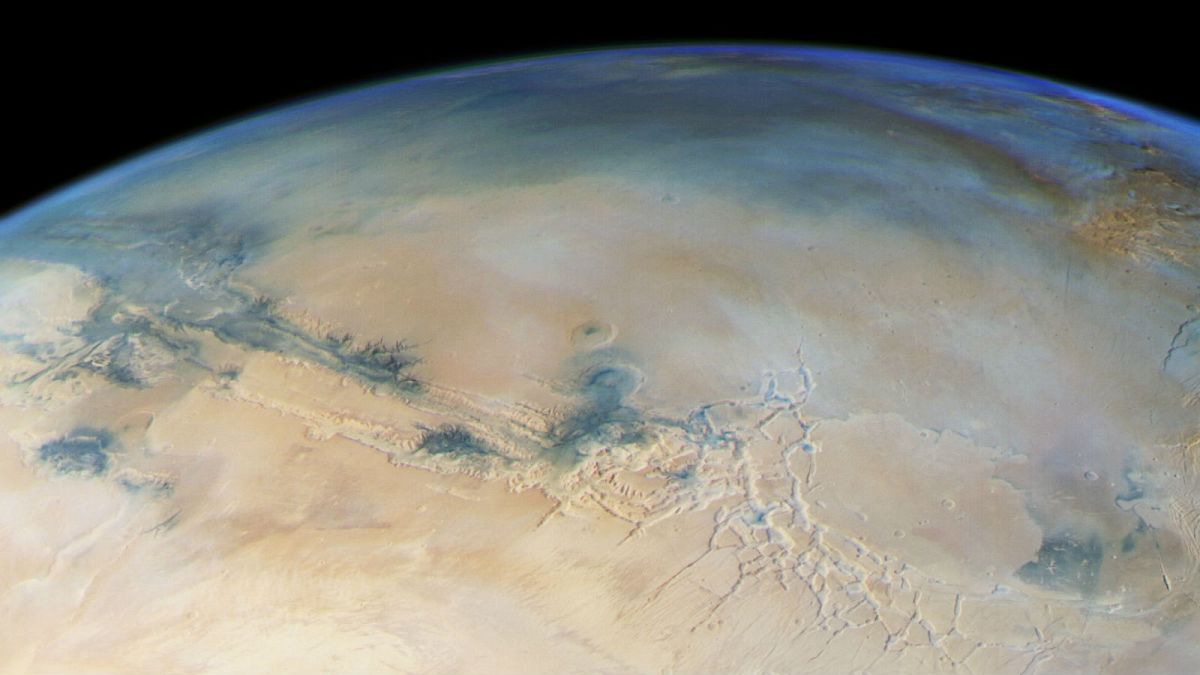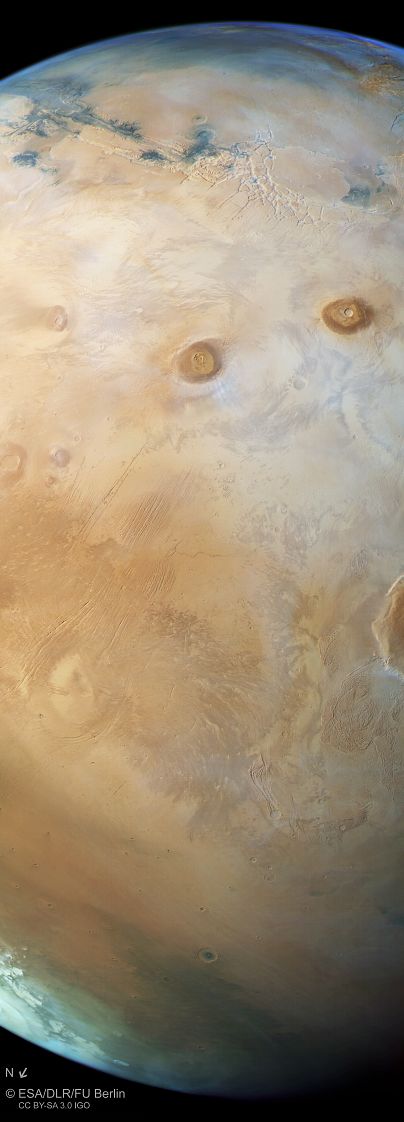The European Space Agency has released a full planet view of Mars to celebrate 15 years of its Mars Express spacecraft, giving a unique new perspective on the red planet.
A true, full planet view of Mars from pole to pole has been released to celebrate 15 years of ESA's Mars Express spacecraft, giving a unique new perspective on the red planet.
The image, taken in October 2017, shows the extinct volcanoes and giant canyon networks that mark the surface of the planet and reveal its history as an active world with water flowing on its surface.
The view shows the province of Mars called Tharsis, one of the most geologically interesting regions of the planet, including Ascraeus and Pavonis Mons, two of the great volcanos, and Noctis Labyrinthus, the complex network of fissures and valleys. These are part of the giant Valles Marineris, a giant strap of canyon across the equator.
To the right of the image you can just see the flank of Olympus Mons, the volcano that forms the tallest mountain on any planet in the solar system. It reaches about 25,000 metres into the sky, two and a half times more than Everest on Earth.
At the top and bottom are the poles, slightly to the left and right in this image. We can make out the ice caps, made of carbon dioxide ice and water ice.
The photo was generated from data taken by the German HRSC instrument on Mars Express, the camera system responsible for many of the extraordinary views of our planetary neighbour that are commonly presented in documentaries, newspapers, magazines and books.
The release of the image comes not only as Mars Express celebrates 15 years since its launch, but also as it receives a new lease of life.
Last month a new software patch was uploaded to the spacecraft to compensate for the wear to its stabilising gyroscopes. It's now going through a period of fine tuning, and is expected to continue operating well into the next decade.
Meanwhile, other Mars exploration missions from Europe are moving ahead rapidly this year. The ExoMars Trace Gas Orbiter mission, launched in 2016, began science operations in the past few weeks, and released its own, jaw-dropping image of Mars, this time a 40-km swathe of Korolev crater from the Swiss CaSSIS camera.
The Trace Gas Orbiter is sniffing for small quantities of gases linked to life, such as methane, and aiming to match those readings with high-resolution images from the CaSSIS camera on board, in order to spot interesting sites for further robotic exploration.
Meanwhile the ESA-Roscosmos ExoMars 2020 mission is racing to be ready for launch in two years' time. It will deliver a large science platform and a rover to the red planet.
ExoMars 2020 is the first mission to directly head to Mars to look for signs of life, rather than signs of habitability, as is the case with the well-known NASA Curiosity rover.

